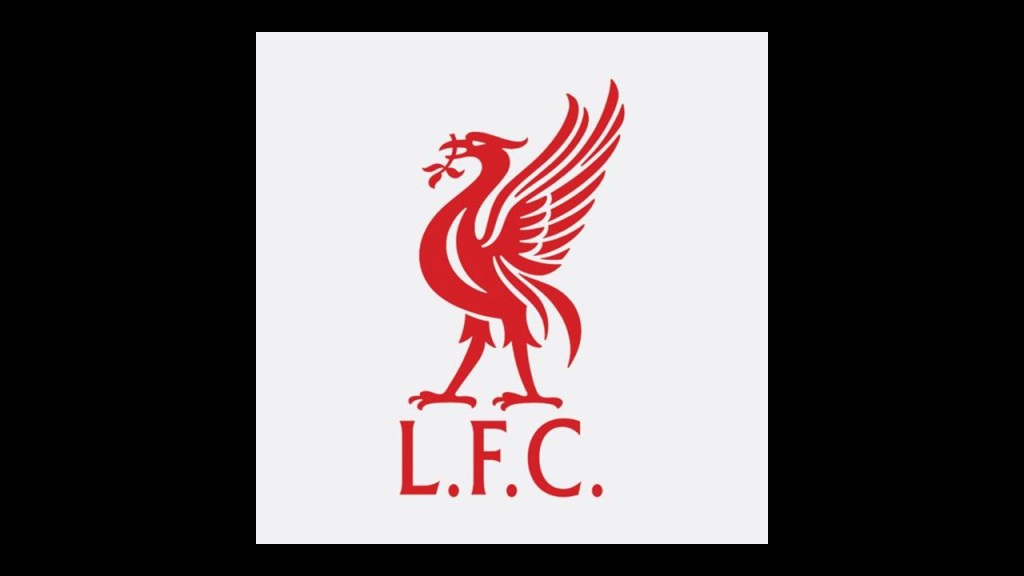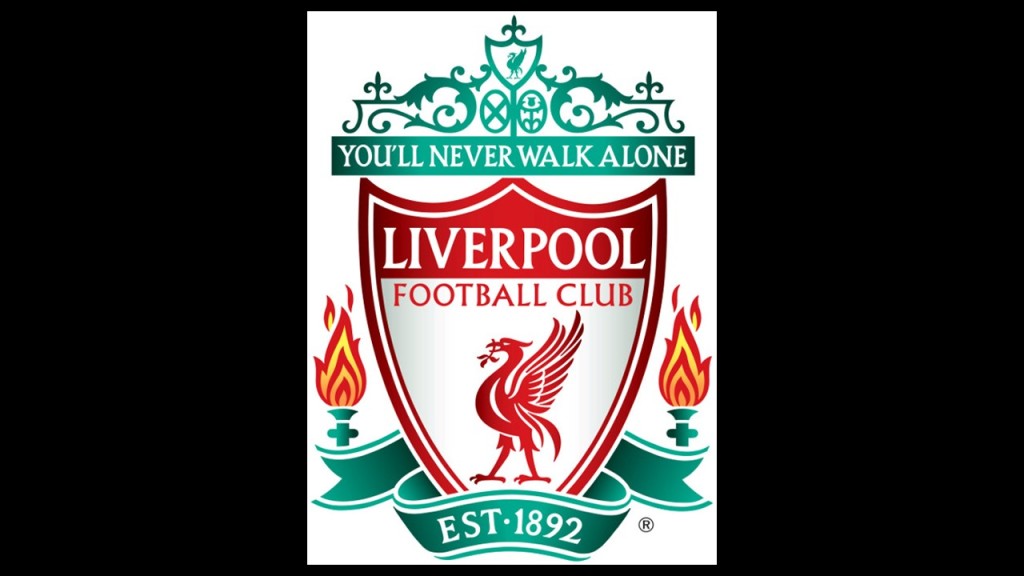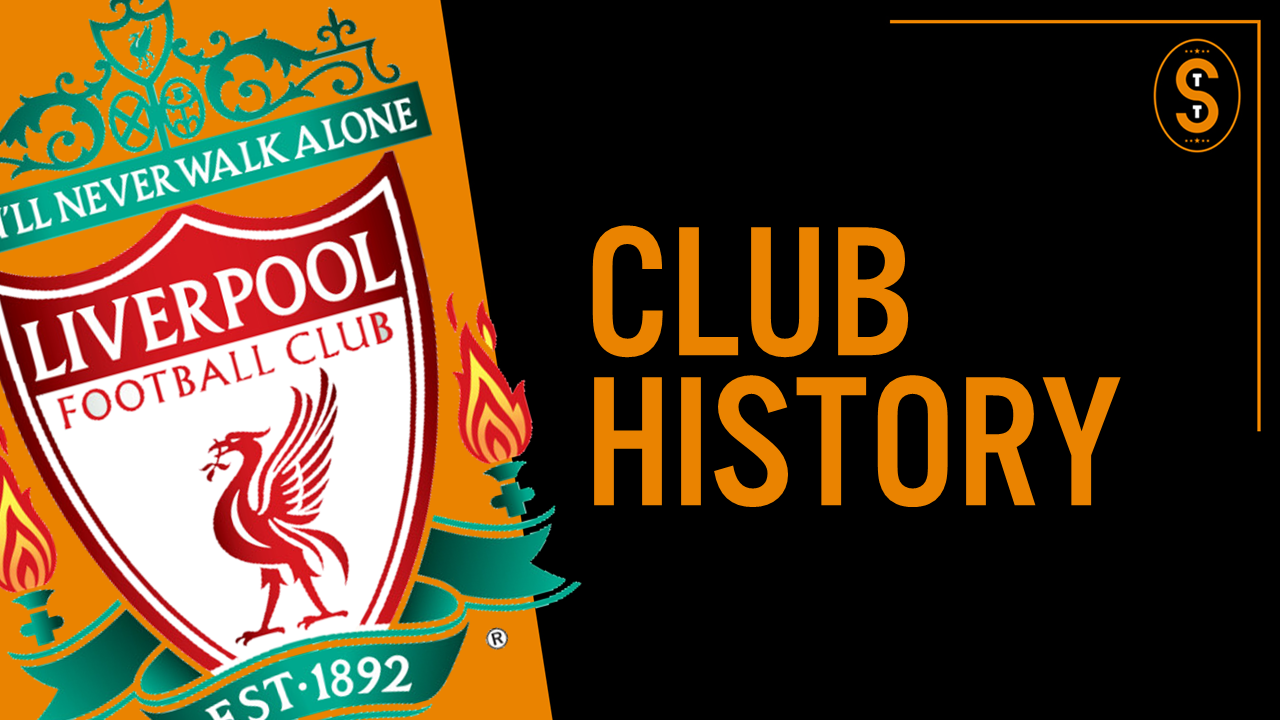Welcome to the Soccer Tavern, where we’re discussing the history, culture, and philosophy of the beautiful game. My name is Dave and in this video, we’re talking about the history of Liverpool Football Club. I’m joined in this video by the biggest Liverpool fan I know, my brother Christian. Christian, welcome to the Soccer Tavern. You ready to talk some Liverpool?
Hey Dave, you know I’m ready. So, pull up a seat and let’s start the discussion.
Liverpool FC is located in the northern part of the city of Liverpool. Liverpool is located in the northwest part of England in the United Kingdom. The club currently play in the Premier League and its home ground is called Anfield, which opened in 1884 but Liverpool have been using it since 1892, which we’ll discuss in our next section. It holds 54,074 people.
Origin
On March 15, 1892, John Houlding was voted off the board at Everton FC. Houlding owned the stadium of Anfield, and did the logical thing when you own a stadium but don’t have a team, he formed a club. He called the club Everton Athletic at first, but after the Football League refused to recognize the club name due to Everton FC already existing, the club name was changed to Liverpool Football Club. Liverpool FC was formally recognized by the Board of Trade on June 3, 1892 making it Liverpool’s officially recognized birthday.
Nicknames
The club has 2 nicknames and both nicknames are pretty simple to explain. The Reds & Pool.
The club’s main color is red, so they’re called the Reds.
And the Pool nickname comes from the last part of the city of Liverpool’s name.
Both are super creative we know.
Crest

The modern crest is a simplified Liver Bird with a piece of seaweed in its beak that makes it easy to identify in the digital age. I love more intricate crests, so instead let’s talk about one of the club’s most recent crests.

This crest is based upon the city’s coat of arms where the Liverbird is prominent. The Liver bird is not a real bird and actually comes from the 1600s when an artist had to redesign the city’s crest. The artist combined an eagle and a cormorant, which is a common bird in the Liverpool area. In the bird’s beak is a piece of seaweed due to Liverpool’s relationship with the sea, as it’s a port city.
At the top of the crest is the Shankly Gate which was erected in 1972 at the entrance to Anfield’s main car park. It’s since been moved to a symbolic place outside Anfield and no longer serves a practical purpose but still holds plenty of significance for the club and its fans.
The club’s famous anthem of You’ll Never Walk Alone is included in the crest along with the founding date of 1892.
The two torches on either side of the logo are justice flames honoring the memory of the victims of the Hillsborough disaster, which we’ll share with you in our next segment.
The green color does not appear to have any known significance other than it has been used with Liverpool FC dating back more than 50 years.
Also, you’ll sometimes see a version of the Liver Bird crest in Yellow, which is a nod to the city’s official colors of red and yellow.
Important Events
Liverpool has many important events in its history but the three events we’d like to discuss here are the Heysel Disaster, Hillsborough Disaster and the Miracle of Istanbul.
Heysel Disaster: On May 29, 1985, Liverpool played Juventus in the European Cup Final (Champions league equivalent) in Heysel Stadium in Brussels, Belgium. Before the match, there were calls from both clubs not to play the match due to the stadium’s dilapidated condition but the match went ahead.
During the match, a section of Liverpool fans rushed a section of Juventus fans on the terraces, which was a common practice at the time, but the rush of people forced the stand to collapse. The collapse and crush of people caused 39 deaths, mainly Juventus fans. Inexplicably, the match actually continued as officials claimed that they believed stopping the match would cause more problems and Juventus won 1-0. The fallout from this tragedy led to all English clubs being banned from European competitions for 5 seasons.
Unfortunately, that is not the only disaster in the club’s history. On April 15 1989, 96 Liverpool fans were killed at the Hillsborough Stadium in Sheffield at Liverpool’s FA Cup semi-final match with Nottingham Forest. It is still the worst stadium-related disaster in English sports history. For years, police blamed fans for causing the crush as the match got underway. However, Liverpool fans have always maintained it was the police and other authorities responsible for safety on that day who were at fault for the disaster.
Finally in April 2016, a jury ruled that the victims had been unlawfully killed following failures by police and ambulance services. Six people were charged in June 2017 for crimes related to the disaster and there was finally some justice for the 96. If there’s any positive to be taken from this tragedy it’s that it forced increased regulation and standards for stadiums and crowd behavior that has led to vastly increased safety for supporters. ESPN has a fantastic 30 for 30 on this; you can watch it here.
The final event we want to discuss is a happy one & comes from 2005. It’s called the “Miracle of Istanbul.”
On May 28, 2005 Liverpool played AC Milan in the final of the Champions League in Istanbul. It was Liverpool’s first top tier European Cup final since the Heysel Disaster. The club was down 1-0 within 53 seconds and trailed 3-0 at halftime. But against all odds and expectations, the club scored 3 goals in a 6 minute span from the 54th to 60th minute and the two clubs remained level through the rest of the match, going to penalties. Most memorable from the penalties was Liverpool keeper Jerzy Dudek’s antics before AC Milan shots. He danced and behaved ridiculously. It worked though as he saved Andrey Shevchenko’s penalty to win the match 3-2 on penalties to Liverpool. It remains one of the most dramatic and improbable Champions League comebacks in history. This is actually one of the main reasons why I became a Liverpool fan.
Supporters
There’s no real formal nicknames for local fans, but international fans usually incorporate a place name combined with some variation of Red or Reds. Such as the Bay Area Reds.
The most passionate fans stand in the Kop behind the goal Liverpool generally attacks in the 2nd half. The Kop name comes from a battle in the Boer war where 300 people lost their lives, many from the city of Liverpool.
And we can’t talk about Liverpool fans without mentioning the song, You’ll Never Walk Alone (YNWA). The song comes from a 1945 Rodgers and Hammerstein musical called Carousel with the most famous version from Gerry and the Pacemakers which were a band from Liverpool.
The song was first reported to be sung in the stands by supporters in 1963. By 1965 Liverpool fans could be heard belting out You’ll Never Walk Alone at Wembley during the FA Cup Final win over Leeds, which is when it became nationally known as the club’s anthem.
Finally, this was the song my mother and I chose to dance to at my wedding, so it holds a special place in my life.
Noteworthy Players
A successful and storied club like Liverpool is sure to have many amazing players throughout their history, but for the sake of time, we’re only going to highlight 3 of them here.
Kenny Daglish joined Liverpool for, what was at the time, a transfer record between 2 British Club’s of £440K from Celtic. He led Liverpool to 3 European Cups, 5 First Division titles, and 4 League Cups solely as a player. He then took over as player manager and won 3 more first division titles, and 2 FA Cups. Liverpool recently dedicated a stand at Anfield to King Kenny.
Michael Owen deserves mention because although he didn’t have the longest or greatest career, he remains the only Liverpool player to have ever won the Ballon D’or, which is given to the best player in the world. He won the award in 2001 as a 21-year old but that was unfortunately the likely pinnacle of his career.
And finally, Steven Gerrard, aka Stevie G, aka Captain Fantastic. He is from the city of Liverpool and joined the club when he was 9 years old. He made his first team debut in 1998, was captain by 2003 at 23 years old, and captained the club for 12 more years until he left in 2015 to join the LA Galaxy for a handful of seasons. He won many trophies, though painfully was never able to win the Premier League in his career. Gerrard was captain for the Miracle of Istanbul and scored stunning, timely goals for the club throughout his tenure. He’s an absolute legend for the club.
Noteworthy Managers
Bill Shankly took over in 1959 & is largely credited with turning the club’s fortunes around from the second division into a perenial trophy contending club. He won 3 first division trophies, 2 FA Cups, and a UEFA cup. He also established Liverpool’s ‘famous Boot Room’ where he would have detailed discussions on tactics with his coaching staff, which was seen as revolutionary at the time.
Bob Paisley took over directly after Bill Shankly in 1974 and made Liverpool a powerhouse domestically and internationally. He led the club to 6 first division titles, 3 European cups, 1 UEFA Cup, 3 League Cups, and personally won the Manager of the year award 6 times.
Also, current manager Jurgen Klopp is recognized as one of the best managers in the world and plays heavy metal, attacking soccer that makes for truly entertaining matches.
Rivals
Liverpool’s biggest rivals are Everton and Manchester United.
The Everton & Liverpool rivalry dates back to the founding of Liverpool FC, which we discussed earlier. Matches between the sides are called Merseyside Derbies in reference to the county that the city of Liverpool resides in and the local river. The clubs play in stadiums less than 1 mile apart, which definitely helps this rivalry as proximity is a great ingredient for a rivalry. Though the clubs have always been rivals, the rivalry didn’t really heat up until the 1980s when both clubs became very successful in England and Europe. The two clubs have played each other over 230 times but this rivalry is definitely peculiar. Matches are incredibly intense on the pitch and in the stands, but there is no real hatred or much violence between the fans. It’s common to see families made up of both Liverpool and Everton fans, which makes this quite a unique rivalry.
The rivalry with Manchester United stems from the natural rivalry between the cities of Manchester and Liverpool. That dates back to the 19th century when the Manchester Ship Canal was built to bypass the city of Liverpool and its control of trade & commerce in the area. From a soccer perspective, Liverpool became dominant in the 1970s and 1980s, so when Manchester United hired Sir Alex Ferguson and he started to build a squad that repeatedly won trophies, Liverpool was the natural target. The combination between the cities being rivals and the two most successful clubs in England has helped make this the fiercest rivalry in England today.
Stats & Records
The stats and records we’re about to discuss are as of March 2018 when we are recording this video.
Liverpool have spent 103 seasons in the top flight in their history.
The club has 41 major trophies including:
- 18 first division titles
- 8 League Cups
- 7 FA Cups
- 5 European Cups/Champions Leagues
- 3 UEFA Cups/Europa Leagues
The Reds have won the European Cup/Champions League, UEFA Cup/Europa league and the League Cup more than any other English side.
The club’s record first team appearance holder is Ian Callaghan with 857 appearances.
The club’s record goal scorer is Ian Rush with 346 goals.
Liverpool’s clean sheet record holder is Ray Clemence with 323 clean sheet.
The club’s record transfer purchase was Virgil van Dijk from Southampton FC on January 1, 2018 for about £75M.
And the club’s record transfer sale was Philippe Coutinho to FC Barcelona in Spain on January 8, 2018 for about £145M.
One more interesting fact about the club: Liverpool have not finished below 8th in the First Division/Premier League since they were promoted back to the top flight for the 1962-1963 season. That’s 55 consecutive years and counting at time of recording.
So there you have it… a bit of history on Liverpool Football Club. Let’s continue the discussion in the comments section below this video.
Christian, thanks for being here and thank you for stopping by the Soccer Tavern. Hope to see you again sometime soon. Cheers.
